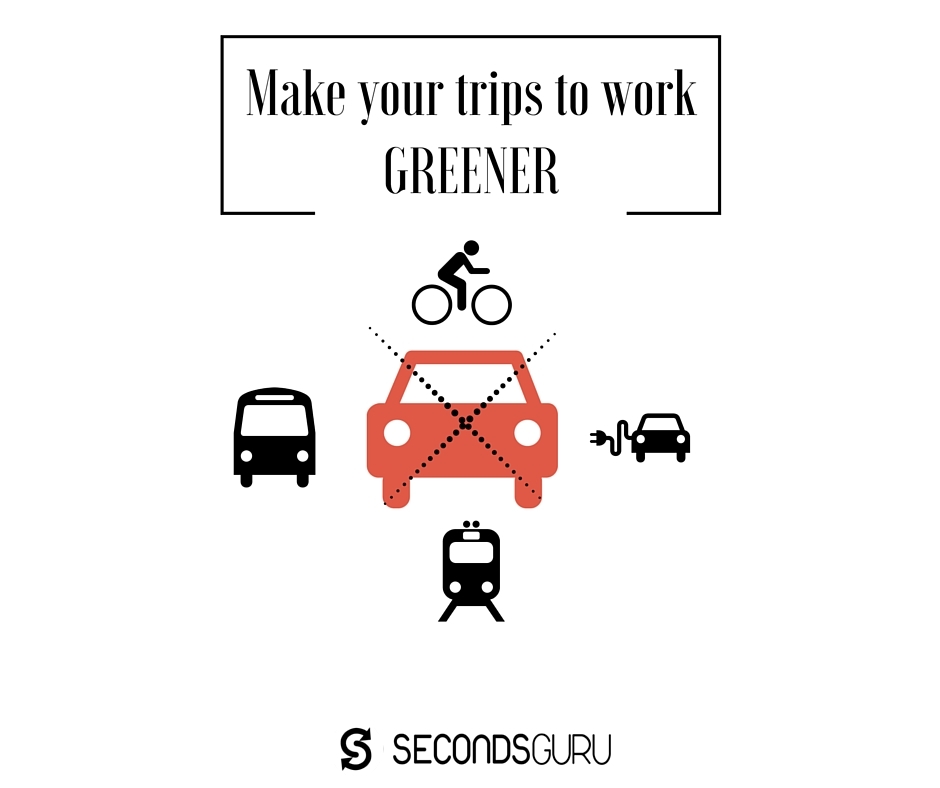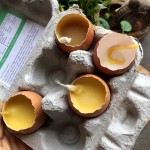Published 27 March 2016 ● Last Updated on 1 October 2020
Waking up in the morning after you have burnt the midnight oil – attending work calls, finishing up a presentation or looking after a near and dear one who is unwell- is hard. It’s harder when you have to rise and shine particularly early to get to work using public transport- it does take a bit of planning and extra time. What do most of us do when faced with the question of how to get somewhere when running late? Well, we take the easy way out. We simply use our mobile phone to book a taxi or just hop into our car and the problem is solved – instantaneously.
But, hold on a minute, is the problem really solved?
It is, for the moment; but are we exacerbating the real problem that Singapore faces on a daily basis- that of the carbon footprint left behind by every individual who takes ‘that’ decision in the morning? Yes, most certainly, yes! It’s a time bomb which is ticking away and small changes on how we choose to go to work daily can make a huge difference to the future of our city.
So what options- besides driving or hopping into a taxi where the Carbon Footprint (Co2 per person per 10 Km) is 1.87 kg^– do we have when we set out of home to get to work every morning and on the way back?
1. Share-a-car: I was overwhelmed by the number of players in this segment in Singapore – Grab hitch, Ryde, Swiftback are a few of the prominent ones. So, the good news is that there are many options available. An opportunity to smile at a new person who you share a ride with in morning and evening will surely make the day a better one and encourage the Kampung spirit in Singapore. A note here though, as per a law passed in March 2015, the drivers of car pool services cannot solicit passengers on the road, and are allowed to make only two carpool trips a day. *
Carbon Footprint (Co2 per person per 10 Km) if you share-a-car: 1.87 kg ^
2. Bus Service in Singapore: I have lived my entire life in Asia (of which the last 3 years have been in Singapore) and have also traveled extensively around the world. While I love a lot of things about the cities I have been to, I have to admit that the bus system here in Singapore is unparalleled. Every bus has a mirror route, so if you arrived at a bus stop say on River Valley Road, there will be another bus stop across the road which will take you back to where you came from. The bus drivers are friendly, co-passengers are helpful and the bus fleets are very well maintained. There you are, all set for a comfortable ride to work and back!
Some facts about the bus system in Singapore:
– Bus MRT Interchange: With 22 bus interchanges (a bus terminal with connections to other modes of transportation like the MRT) in Singapore and more to come, it will become increasingly tough to make excuses for not taking the energy efficient way to work.
– More buses: 2014 saw the addition of 550 buses added to the bus fleet in Singapore. Another 450 will be added by 2017. More buses = Less waiting time!
– March 2016 will see a. operating hours of bus lanes extended from 8 pm to 11 pm, so waiting time will get further reduced b. Pilot launch of the “Mandatory give way to buses” scheme rolled out at two bus stop on Orchard road where motorists will have to give way to buses pulling out of bus stops.
To top it all, there is an app war going on in the mobile applications for monitoring bus arrival timings, nearest bus stops, bus routes in Singapore- SG BusLeh and SG NextBus are the two key players in this space. We consumers love such peaceful wars as they inevitably lead to better services for us :-).
Carbon Footprint (Co2 per person per 10 Km) if you take a bus: 0.19 kg ^
3. MRT : The occasional disruptions aside, the MRT system in Singapore serves a lot of the working community in the city and is much needed. The LTA and the MRT management are together making a conscious efforts to move towards better service and less waiting time for the commuters. For facilitating this:
– After the recent opening of the downtown line, more trains are getting added to the fleet. For instance, the lines which have high demand like the Bukit Panjang LRT line will soon have more train cars added.
-The Hong Kong MTR system is being used as a model to adopt best practices where applicable and possible.
Carbon Footprint (Co2 per person per 10 Km) if you take the MRT: 0.13 kg ^
4. Cycling: With a ZERO carbon footprint, this is the best way to be lean and green at the same time! Moreover foldable bikes are now allowed on buses so if you want to cycle one way to work and bus it on the way back, you can do it! Before you take the plunge, take time out to plan your route to work on a weekend. The route mapping is imperative so that your ride is pleasant and safe- as far away from the maddening vehicular traffic as possible. With more cycling paths, more dedicated paths for cyclists and crossings exclusively for bikers, Singapore is slowly but surely moving towards a safer city for cyclists. Some facts here
– As per the targets set by Ministry of Transport, Singapore, 16 HDB towns will have cycling paths by 2020 and all HDB towns will have cycling paths by 2030.
– More cycle parking facilities at MRT stations are to open by 2024. This is useful if you want to cycle part of the way to work and take the MRT for the rest of the journey.
– More dedicated paths for cyclists and bicycle crossings (akin to footpaths and footbridges for pedestrians) across roads. ^
The one big challenge in biking to work in Singapore is the high levels of humidity. However if you can sort this problem out- using the shower in the gym nearby office, or the showering facilities in your own office or just use a wet towel to get fresh- then you are sorted!
The recent recommendations to the Government of Singapore by the Active Mobility Advisory Panel seek to create a fairer playing field for cyclists in Singapore while keeping the safety of pedestrians first. Time will tell as to how much of it will be implemented on the road- for e.g. allowing cyclists to use pedestrian footpaths albeit with speed limits- and really enable more cyclists on the streets here. Read full report here.
Carbon Footprint (Co2 per person per 10 Km) if you CYCLE instead: ZERO ^
4. If you must drive, either buy or rent a non-fuel car– With Elon Musk getting personally involved in the latest controversy on the Tesla S class electric car- the only one that was imported into Singapore and was slapped with a $15000 tax for having a non fuel efficient car- the e-car space is even more interesting now. Read the full story here. While this is getting sorted, there are hybrid cars from BMW, Honda, Toyota which are available in the primary and second-hand market in Singapore. You can also rent a hybrid car from SMOVE in Singapore.
All of the alternatives aside, a smart way to start off would be by waking up on time after a good night’s sleep and planning your commute to work. Heck, you can even try out few options before you settle for the one that’s best for you. If you want to try cycling you can rent a bike easily in Singapore. If you want to rent a fuel-efficient car, sure go for it- it’s expensive but definitely better than driving a regular car. Make a group of 1-2 colleagues who live and work in the same area and then all of a sudden your bus ride, cycle journey and/or MRT ride will become more fun and engaging!
Sources:
* “$1.5mn for Singapore carpool app to Ryde on”, Straits Times
** “Battle of Singapore bus apps: SG Busleh vs SG Buses”, Vulcan Post
^ “5 reasons to cycle more in Singapore”, Ministry of Transport




0 Comments